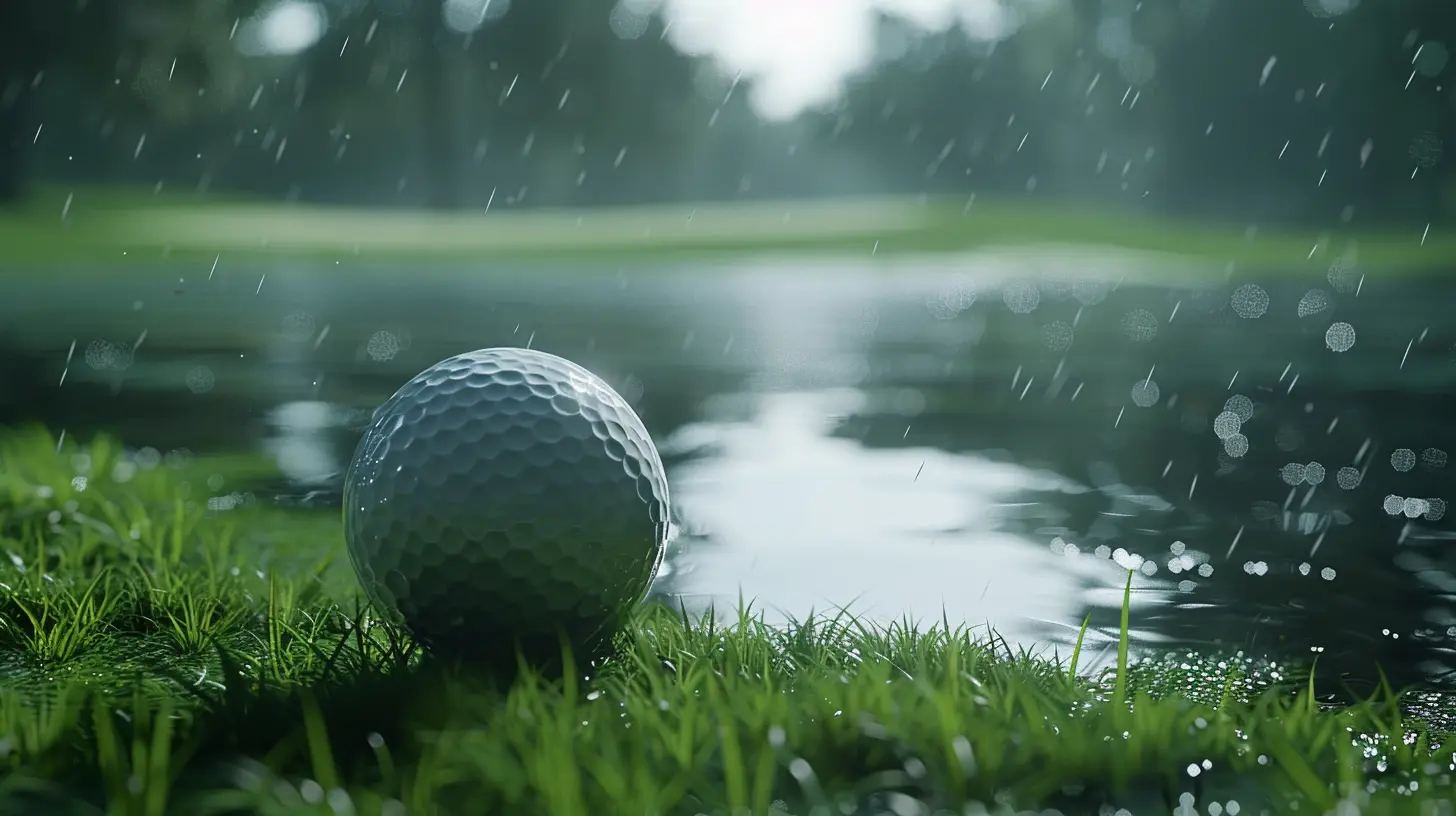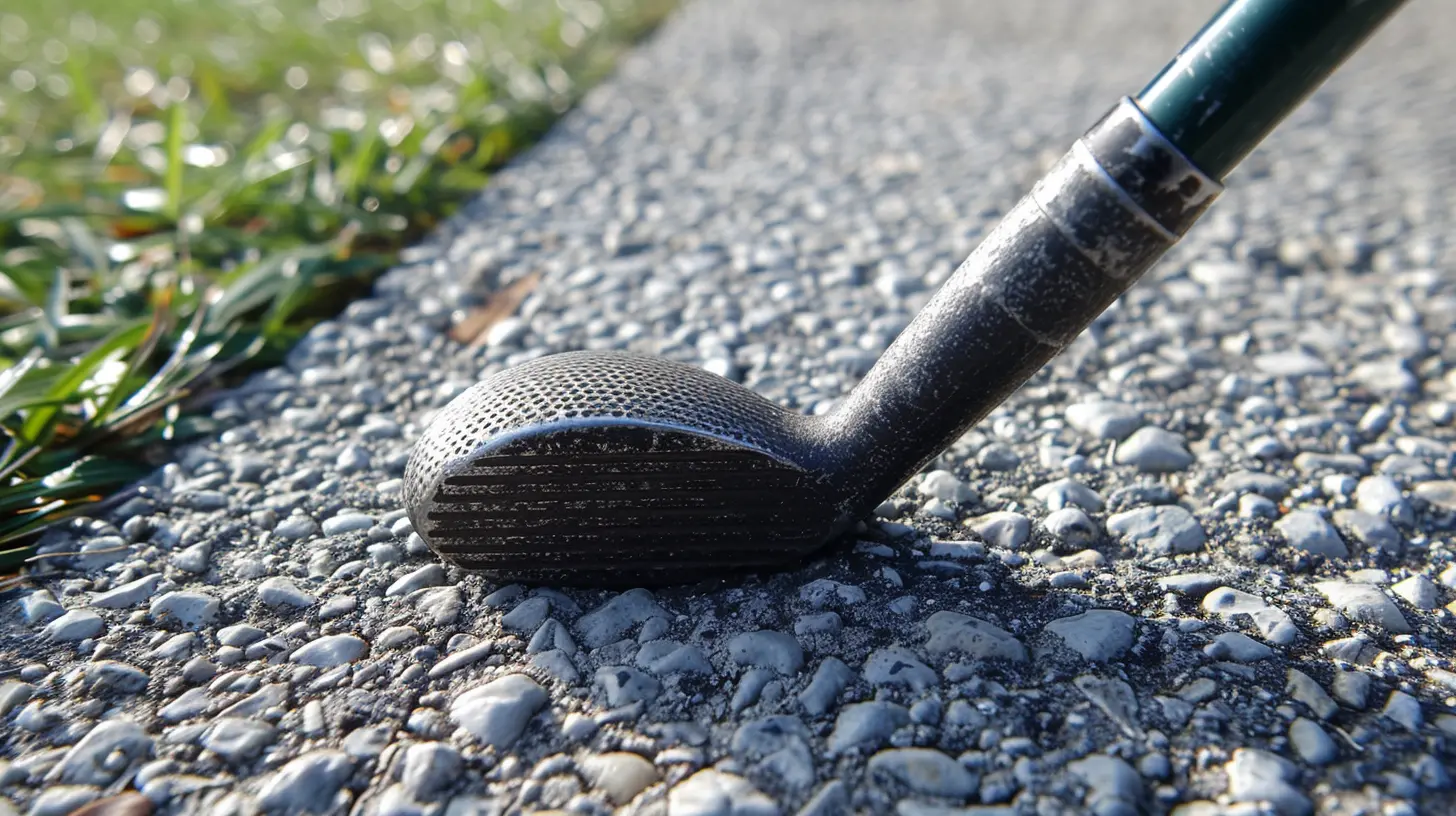How to Play Golf on a Budget
23 May 2025
Golf is often seen as a luxury sport, something that requires a hefty investment in clubs, memberships, and green fees. But does it really have to burn a hole in your pocket? Absolutely not. You can enjoy the game without breaking the bank. Whether you're a seasoned golfer or just getting started, there are plenty of ways to play golf on a budget. It’s all about being smart, creative, and resourceful. Today, we’ll break down how you can tee off while keeping your wallet happy.

Why Golf Seems Expensive
Before we dive into tips, let’s address the elephant in the room. Why does golf have a reputation for being expensive? There are several reasons for this:- Equipment costs: A brand-new set of clubs can easily run you several hundred, if not thousands, of dollars.
- Green fees: Some courses charge upwards of $100 for a single round.
- Club memberships: Fancy country clubs can cost thousands annually.
- Accessories: Balls, tees, gloves, shoes... it all adds up!
But don't worry—you don't need to splurge on all of these. Let’s explore how you can get the full golf experience without breaking the bank.

1. Buy Used or Discounted Golf Clubs
First thing’s first—don’t buy brand-new clubs. Seriously. Golf equipment depreciates faster than a new car driving off the lot. Unless you're a professional, there's really no need to invest in the latest and greatest gear.Where to Find Affordable Golf Clubs:
- Online Marketplaces: Websites like eBay, Craigslist, or even Facebook Marketplace are goldmines for gently-used golf clubs. You might find a full set that’s barely been used at a fraction of the price.- Golf Discount Stores: Stores like Global Golf, 2nd Swing, or even Play It Again Sports offer discounted clubs, both new and used.
- Demo Days: Some courses and golf shops hold demo days where you can purchase lightly-used demo equipment for much less.
Pro Tip: Start with a half set. Instead of a full 14-club set, you can start with the basics—driver, putter, 5-iron, 7-iron, and pitching wedge. This will save you money and give you all the tools you need to play.

2. Skip the Fancy Golf Courses
The allure of manicured fairways and pristine greens at high-end courses can be tempting, but there’s no reason you need to play at a top-tier course to enjoy the game.Alternatives to Expensive Courses:
- Municipal Courses: Local government-owned courses are often much more affordable. Many offer green fees at a fraction of the price of private clubs.- Twilight Rates: Many courses offer discounted rates if you play later in the day. Twilight hours usually start after 3 p.m. and can save you up to 50% off regular fees.
- 9-Hole Courses: Instead of playing a full 18 holes, consider playing a 9-hole course. It’s quicker, cheaper, and just as much fun.
Pro Tip: Use apps like GolfNow or TeeOff to find deals and discounts on local courses. These apps often have last-minute deals that can save you big!

3. Walk the Course Instead of Renting a Cart
This might be a no-brainer, but walking the course instead of renting a cart can save you a surprising amount of money. Cart fees can add up quickly, often costing as much as $15-$30 per round.Plus, walking is a great way to get some exercise, absorb the beauty of the course, and take your time between shots. Think of it as hitting two birds with one stone—you’re saving money and getting in your daily steps. Win-win!
Pro Tip: Invest in a lightweight golf bag with a stand or a pushcart if you prefer not to carry your clubs the whole round.
4. Buy Golf Balls in Bulk
Golf balls can be one of the most frustrating expenses, especially if you’re prone to hitting them into the water or the woods (don’t worry, we’ve all been there). Instead of buying expensive, brand-new golf balls, look for cheaper alternatives.Bulk-Buying Tips:
- Recycled or Refurbished Golf Balls: Many companies sell recycled balls that have been cleaned and tested to be nearly as good as new. You can get these for a fraction of the cost of new balls.- Buy in Bulk: Check out warehouse stores like Costco or online retailers like Amazon for bulk deals on golf balls.
- Scavenge: If you’re playing a public course and happen to find a few lost balls in the woods or water hazards, don’t be shy about picking them up. Free balls are the best kind!
Pro Tip: You don’t need to buy the most expensive Titleist Pro V1s if you’re a beginner or intermediate player. Opt for mid-range balls that perform well and don’t cost an arm and a leg.
5. DIY Practice at Home
You don’t need to hit the driving range every day to improve your skills. There are plenty of ways you can practice your swing, putting, and chipping at home for free (or nearly free).How to Practice Golf at Home:
- Putting Practice: Get a putting mat or simply use a carpet and set up a few cups as targets. You can easily work on your short game without leaving the house.- Swing Practice: You don’t always need to hit balls to practice your swing. Work on your form and technique in your backyard or garage. Use a mirror to monitor your posture and swing path.
- Chipping Practice: Use foam golf balls or even wadded-up paper balls to practice chipping in your backyard. Aim for targets like buckets or laundry baskets to hone your accuracy.
Pro Tip: If you want to invest a little, consider getting a golf net for your backyard, allowing you to practice full swings without worrying about breaking any windows.
6. Take Advantage of Free Resources
Golf lessons can be costly, but that doesn’t mean you have to skip learning from the pros. The internet is full of free resources that can help you improve your game without shelling out for expensive lessons.Where to Find Free Golf Tips:
- YouTube: There are countless golf instructors offering free tips, tutorials, and drills on YouTube. Channels like MeAndMyGolf, Rick Shiels, and Golf Digest offer great insights for golfers of all levels.- Golf Blogs and Websites: Many golf websites provide free articles and guides on techniques, drills, and equipment reviews. Spend some time exploring different resources to find what works best for you.
- Golf Apps: Free apps like 18Birdies or Golfshot offer tips, GPS tracking, and stats that can help you analyze your game and identify areas for improvement.
Pro Tip: If you’re a beginner, focus on one or two key areas at a time (like your grip or your stance) to avoid feeling overwhelmed by all the information out there.
7. Avoid Buying Unnecessary Accessories
It’s easy to get caught up in the world of golf accessories—rangefinders, high-end gloves, personalized towels... the list goes on. But do you really need all these gadgets? Probably not.Stick to the Basics:
- Golf Glove: A basic glove will do just fine. Don’t waste your money on premium leather gloves unless you’re playing competitively.- Tees: Buy basic plastic or wooden tees in bulk. There’s no need for fancy, reusable ones.
- Towel: A simple towel to wipe your clubs and hands is all you need—no need for it to be embroidered with your initials.
Pro Tip: Before buying any accessory, ask yourself, “Will this actually improve my game, or is it just a cool gadget?” If it’s the latter, skip it.
8. Play with Friends and Split Costs
One of the best parts about golf is that it’s a social game. And when you play with friends, you can also save money by splitting costs. Whether it’s carpooling to the course, sharing a cart, or splitting a bulk purchase of balls, there are plenty of ways to cut costs together.Pro Tip: Organize small golf outings with friends and look for group discounts. Some courses offer reduced rates for groups of 4 or more.
9. Time Your Purchases
Like any other sport, golf equipment, and apparel often go on sale during certain times of the year. If you can time your purchases right, you can save a lot of money.When to Buy:
- End of Season Sales: Many shops clear out inventory at the end of the golf season (fall and winter), offering deep discounts on clubs, shoes, and apparel.- Holiday Sales: Keep an eye out for Black Friday, Cyber Monday, and other big holiday sales.
- Demo or Previous Year’s Models: You don’t need the latest gear. Last year’s models perform just as well and are often significantly cheaper.
Pro Tip: Sign up for email newsletters from your favorite golf stores to stay informed about upcoming sales and promotions.
Final Thoughts
Playing golf on a budget is not only possible—it can be just as enjoyable as playing with top-of-the-line gear and on expensive courses. By being resourceful, making smart purchases, and taking advantage of free resources, you can enjoy the game without draining your bank account. So, go ahead, grab your clubs (even if they’re second-hand), and hit the course. You don’t need to spend a fortune to love the game of golf.all images in this post were generated using AI tools
Category:
GolfAuthor:

Umberto Flores
Discussion
rate this article
4 comments
Geneva McDowney
Who needs fancy clubs? Swing like a pro, not a diva!
June 12, 2025 at 2:30 AM

Umberto Flores
Absolutely! It’s about skill and strategy, not just expensive gear. Happy golfing!
Katherine Reese
Great insights! Budget-friendly golfing tips are invaluable for beginners and seasoned players alike. This article makes the sport more accessible without compromising on enjoyment. Well done!
May 30, 2025 at 2:15 AM

Umberto Flores
Thank you! I'm glad you found the tips helpful and that they resonate with golfers of all levels. Enjoy your game!
Elowen Lozano
This article offers practical tips for golf enthusiasts seeking to enjoy the sport without breaking the bank. It highlights affordable equipment options and local courses, emphasizing that golf doesn’t have to be expensive. I appreciate the focus on accessibility and creativity in playing.
May 25, 2025 at 12:57 PM

Umberto Flores
Thank you for your feedback! I'm glad you found the tips helpful and appreciated the focus on making golf more accessible. Happy golfing!
Carrie McQuillen
Playing golf on a budget is all about prioritizing essentials: focus on affordable gear, seek out discounted tee times, and learn DIY techniques for practice. Embrace local courses and community events to hone skills without breaking the bank.
May 23, 2025 at 2:16 AM

Umberto Flores
Great tips! Prioritizing essentials and utilizing local resources can make golf enjoyable and affordable. Thanks for sharing!



